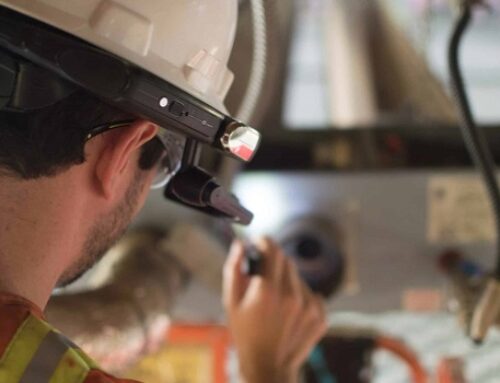
Do you have to choose between face-to-face training and distance training? And what if we combine the two together? In fact, the key to success of company training is to find a certain balance. In recent years, a new type of learning has entered the business world. Of course, here we are talking about blended learning.
In this article, we will try to answer all the most frequently asked questions that revolve around blended learning.
What is blended learning?
Better known as “hybrid learning”, blended learning is the combination of face-to-face learning and distance learning. This type of learning is based on the advantages of face-to-face sessions (easy application of knowledge, natural interactions with the trainer and between learners) and the advantages and educational modalities of e-learning (reduced cost, permanent accessibility of training, permanent availability of educational content, time saving…)
Therefore, this type of learning helps to strengthen learner involvement. In fact, through tis hybrid learning (face-to-face and remote), the employee is put at the heart of the training process. He is even the main actor. The employee acquires certain autonomy in his career which pushes him to be involved and makes him more motivated.
Note that there is no standard model for blended learning. There are several possible combinations. For example, training can be more directed towards e-learning or virtual classroom courses punctuated by some face-to-face sessions in order to exchange with the trainer and other learners. This helps to put theory into practice.
To sum up, it is possible to say that blended learning or hybrid learning varies learning formats in order to adapt educational objectives to the profile of its learners and the organizational context. This aims to improve results and mainly the impact of training.
How does blended learning training work?
As mentioned previously, blended learning is divided to two forms of learning (face-to-face and remote).
Face-to-face learning
In this type of learning, the trainer and learners are in physical contact to exchange and discuss the professional training. At this meeting, both parties take stock of progress and evaluations of trainings. These face-to-face sessions create a privileged relationship between trainers and learners. They also optimize educational resources. The trainer occupies the position of the privileged interlocutor of learners and trainees. His mission is to transmit his knowledge and to guide participants in their training course.
Distance learning (digital learning)
E-learning takes place during virtual classes. There are open and distance learning modules. They are thus accessible through e-learning software and virtual platforms. In this way, learners are free to choose where and when they wish to train according to their availability. These online sessions offer employees a great deal of freedom since the resources are accessible online.
What are the stages of blended learning training?
Blended learning is primarily based on a thorough understanding of the learners’ needs and expectations. Before starting any training, opinion surveys should be conducted in order to clearly identify the employees’ aspirations when they embark on training.
You are not going to find a specific model for implementing a training program within your company. Each company adopts the concept according to its policy, value and budget. However, a framework can be recommended to guide new members.
Employee survey
As already mentioned, it seems essential to take stock with all employees at the outset. This helps to collect opinions and desires related to the change in the organization of trainings. As they are the first concerned, it is important to use a learning format that meets their expectations in order to ensure effectiveness and relevance.
Setting objectives and tools used
This phase will determine the objectives to be achieved in order to properly structure the training process. Choosing the right communication tools as well as content is also an important step. Make sure that materials appeal to employees to hang them and invest them in a continuous learning process. There are several software and online training follow-up programs. Examples include the e-learning training platform, LMS (Learning management system).
Follow-up
Blended learning empowers employees to learn new skills. However, it is essential to carry out a follow-up by a trainer. This is in order to guide and advise the learner to avoid being left with unanswered questions or forgetting essential elements.
The trainer makes sure a guideline is maintained in the training process. His mission is also to provide key elements to learners to enrich their learning.
Reward
In order to value the enrolment process in a training process, it is essential to offer a reward. In fact, granting a certification to record the end of the training enhances the value of the employee. It is essential that the learner involved in the training be able to promote this new skill. Note that when the employee finds real interest in training is an asset to be involved in a continuous training process.
What are the advantages of blended learning?
Such a learning format should be a real advantage to companies that are seeking to improve their approach to training.
The advantages of blended learning for the learner
- Independence, autonomy, interactivity and empowerment
- Management of training time according to the schedule
- Easy access to training from anywhere
- Time saving
- Collaborative work
- Flexibility of the training
The advantages of blended learning for the company
- Reduction of training costs
- Efficiency of the training
- Time saving for business leaders and managers
- Optimization of training management
About Picomto
Picomto is a digital solution that addresses the main causes of ineffective training. This tool helps companies to succeed in their employee training process.




Leave A Comment